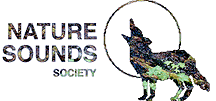NSS Home Page  Nature Sounds Newsletter Nature Sounds Newsletter  Winter 1995 Winter 1995  National Parks As 'Bowling Alleys'? National Parks As 'Bowling Alleys'?
|

|
Our National Parks As 'Bowling Alleys'?
by Dick Hingson Zion and Rocky Mountain National Parks have great silence which envelop noble structures and lovely mountain meadows. I spent August and September measuring these ambient silences with a National Park Service (NPS) prototype device that is capable of measuring sound pressure levels accurately to as low as zero decibels. Simultaneously, I could determine and enter the source of the sound -- whether natural of human-generated -- into the record. Every second, this device's Computer flashed the current sound level to the nearest 0.1 decibel. Even when the ear could detect no sound, levels as low as 15-20 decibels -- the very threshold of hearing -- turned out to be common and prolonged in the quiet places of Zion and Rocky Mountain National Parks. This is consistent with recent NPS measurements of natural quiet documented in "Effects of Aircraft Overflights on Units of the National Park Service." But the stunning silence of these great natural cathedrals and amphitheaters is being tragically trashed by the thunder of scores of commercial jets which streak daily, high above these parks. In Zion for example, near Angel's Landing in the heart of the park, across from the Great White Throne, the jets in some hours were audible over half of the time. These sometime peak at seemingly thunderous levels of 60+ decibels, compared to the extremely quiet natural soundscape. In Rocky Mountain National Park, measurements at Upper Beaver Meadows during the "evening hush" (after winds decreased) were dominated by commercial jet overflights in and out of Denver International Airport. Then there were other jets "just passing over" en route to/from other destinations/origins. The jets indeed sound like bowling balls rolling down an alley, one, then another, then the next. These aviation sound tracks persist up to 3 or 4 minutes each in exposed areas like the high meadows of the Rocky Mountains. Elk bellowing and sparring could be heard far out in the meadows, but all these sounds were being mixed with and drowned out by regular jet "rolling thunder" and the unnatural "growling" which reached disturbing frequencies and intensities. Buses, cars, motorcycles, and huge RV's are also generating high levels of noise pollution -- mainly along roads such as the park road in Zion's depths and along Rocky Mountain's high tundra. Ground traffic even becames secondary to aviation's "sound imperialism" reigning throughout otherwise quiet canyons and meadows. In Zion, there is a proposed solution for ground traffic. The park management has plans to prevent entry by these vehicles by the year 2000, allowing access only by a substitute system of tramways. In Zion, one common flight axis is perfectly aligned with the park's main canyon so that it might as well, whether by accident or design, be considered aviation's "Greatest Bowling Alley". The same is found at Upper Beaver Meadows, six hundred miles northeast and in the once "silent desert" of the newly established Mojave Preserve, two hundred miles southwest, toward Los Angeles, where another acoustic disaster zone is being created. How does this effect our perception of national parks as places where natural quiet is a cardinal attribute? Or perhaps quiet places as rare resources of respite and inspiration for a harried and stressed populace? And places where sounds of silence, wildlife, wind and water are supposed to be predominent? Without moving the commercial air routes and general aviation away from the parks, all of the quiet places within will increasingly be overwhelmed. The canyon floor, the mountain meadows, the desert vistas -- all will increasingly be dominated by the unregulated frenzy of air transport high above. As this "century of aviation" comes to a close, we need to open up some breathing holes in this noise blanket above, else our contemplative capacities will wither and suffocate. |

|
This site and its contents copyright © 1996-2003 The Nature Sounds Society. About this web site |

|
